Nestled within the heart of Central America, Costa Rica is a land of enchanting biodiversity. Vibrant rainforests give refuge to an astonishing array of avian wonders, making for excellent birdwatching opportunities.
Birdwatching in Costa Rica is not merely a hobby; it is a transcendent journey into a realm of unparalleled natural beauty.
This tropical paradise beckons ornithophiles and nature lovers from across the globe for a myriad of compelling reasons, captivating their hearts and minds.
In this article, we will explore why Costa Rica stands as an unrivaled gem in the world of birdwatching, with its rich tapestry of ecosystems and an avian population that rivals few others.
From resplendent quetzals to the elusive harpy eagle, from the majestic scarlet macaw to the diminutive hummingbirds, each moment spent in pursuit of these winged marvels in Costa Rica is an invitation to witness life in its most vivid and enchanting form.
Discover why this lush, ecologically-conscious nation is a must-visit destination for anyone yearning to immerse themselves in the extraordinary world of avifauna.
Costa Rica is your paradise for birdwatching!
- Monteverde Cloud Forest: Over 400 species – cloud forest magic awaits!
- Corcovado National Park: Scarlet Macaws, toucans – pristine nature’s concert.
- La Selva Biological Station: Exotic birds galore in this rainforest haven.
- Arenal Volcano National Park: Vibrant quetzals dazzle around the majestic Arenal.
- Manuel Antonio National Park: Beaches, lush forests, and 180+ bird species.
- Tortuguero National Park: Birdwatching amidst nesting turtles – truly unique!
- Santa Rosa National Park: Majestic dry forests – habitat to diverse avian species.
- Carara National Park: Scarlet macaws, trogons – a birder’s dream destination.
- San Gerardo de Dota: Resplendent quetzals shine in cloud forest tranquility.
- Cerro de la Muerte: Alpine paradise – seek highland species in misty landscapes.
Discover the Uniqueness
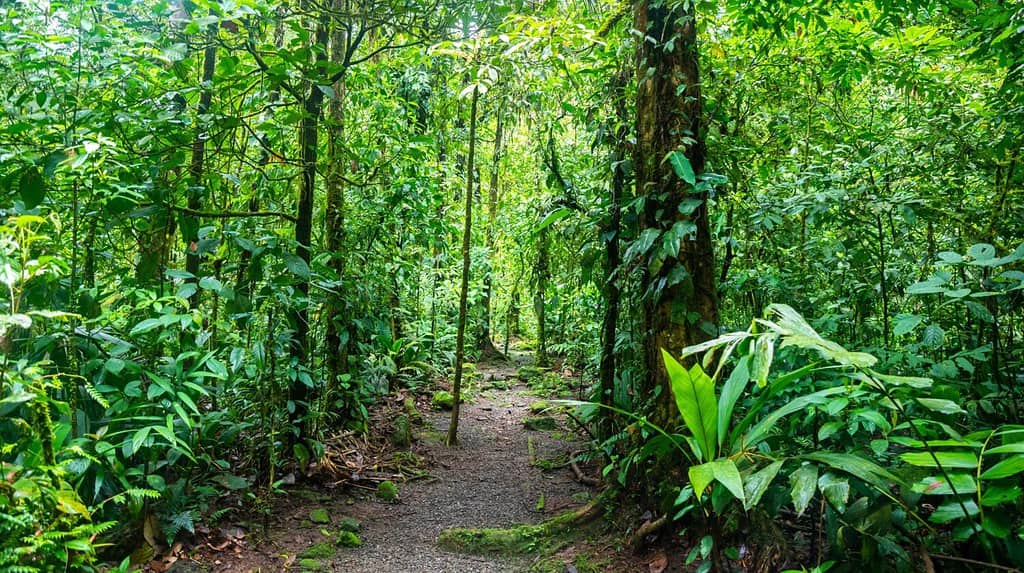
Monteverde, one of many great places for birdwatching in Costa Rica.
©Jakub Maculewicz/Shutterstock.com
1. Monteverde Cloud Forest
Monteverde, situated in the Tilarán Mountains, is a birdwatcher’s dream.
Its mystical cloud forests provide a unique ecosystem that supports over 400 species of birds.
The frequent mist and cool climate make it perfect for quetzals, bellbirds, tanagers, and more. The rich biodiversity thrives due to Monteverde’s pristine environment, drawing birdwatchers to experience nature’s magic.
To enhance your visit, consider staying at the Trapp Family Lodge, where expert guides can lead you to the avian wonders of this incredible cloud forest.
Tip: Explore early morning and hire a guide.
2. Corcovado National Park

The Chestnut Mandible Toucan thrives in Corcovado National Park.
©iStock.com/RicInVenice
Located on the Osa Peninsula, Corcovado National Park is a haven for avian enthusiasts.
This pristine rainforest teems with biodiversity, attracting a variety of birds, including the iconic scarlet macaws, toucans, and even the elusive harpy eagle. The untouched natural beauty of the park sets the stage for an unforgettable birdwatching experience.
To make the most of your visit, consider joining guided tours and staying at the eco-friendly La Leona Eco Lodge for a deeper connection with this wilderness.
Tip: Guided tours are a must
3. La Selva Biological Station
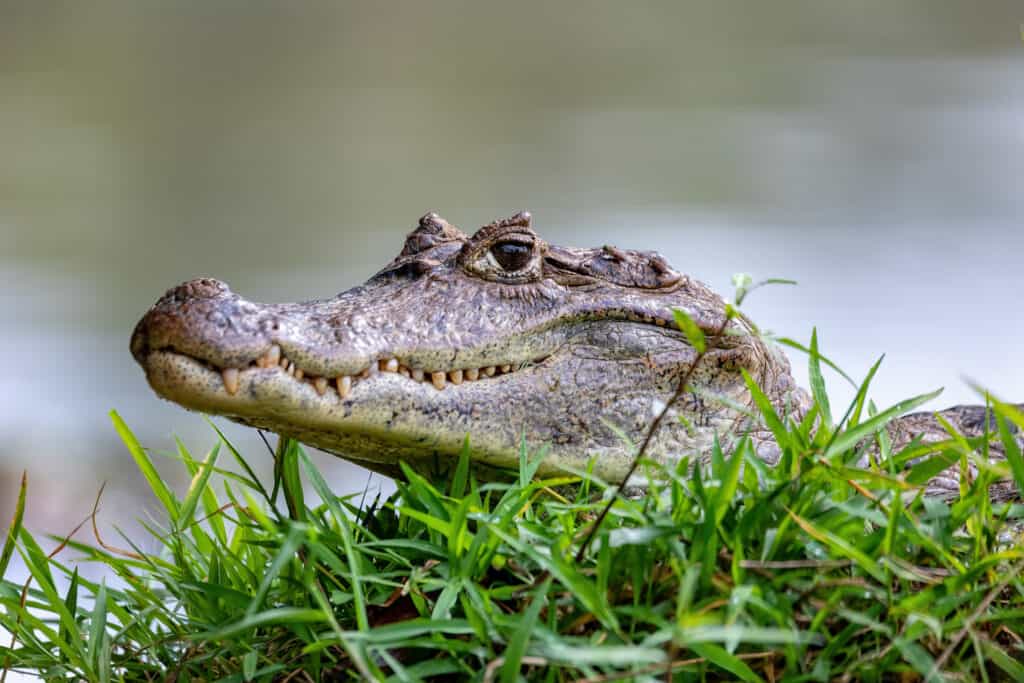
Spectacled caiman (
Caiman crocodilus) feasts on small birds.
©Artush/Shutterstock.com
In the heart of Sarapiquí lowlands, La Selva Biological Station is a mecca for birdwatching enthusiasts.
The region’s diverse and exotic bird species make this destination a hot spot for birdwatchers. The proximity to the Cano Negro Wildlife Refuge provides added opportunities for spotting unique avian species.
To maximize your birdwatching adventures, research available tours, and stay at the Selva Verde Lodge, an eco-lodge committed to preserving the rainforest’s delicate balance.
Tips: Research tours. Visit the Cano Negro Wildlife Refuge. Use a local guide.
4. Arenal Volcano National Park

Arenal Volcano region includes a rich diversity of animal and avian species.
©Esdelval/Shutterstock.com
The Arenal Volcano region, known for its majestic volcano, is equally famous for its avian wonders.
Vibrant quetzals, toucans, and motmots are just a few of the many species that call this area home. The park’s diverse range of ecosystems, from primary rainforests to secondary forests, provide ample opportunities to explore and observe these feathered beauties.
To complement your experience, consider booking accommodation at the Arenal Observatory Lodge and Spa, where you can wake up to a volcano view and the songs of tropical birds.
Tip: Rent a boat to venture onto Lake Arenal.
5. Manuel Antonio National Park
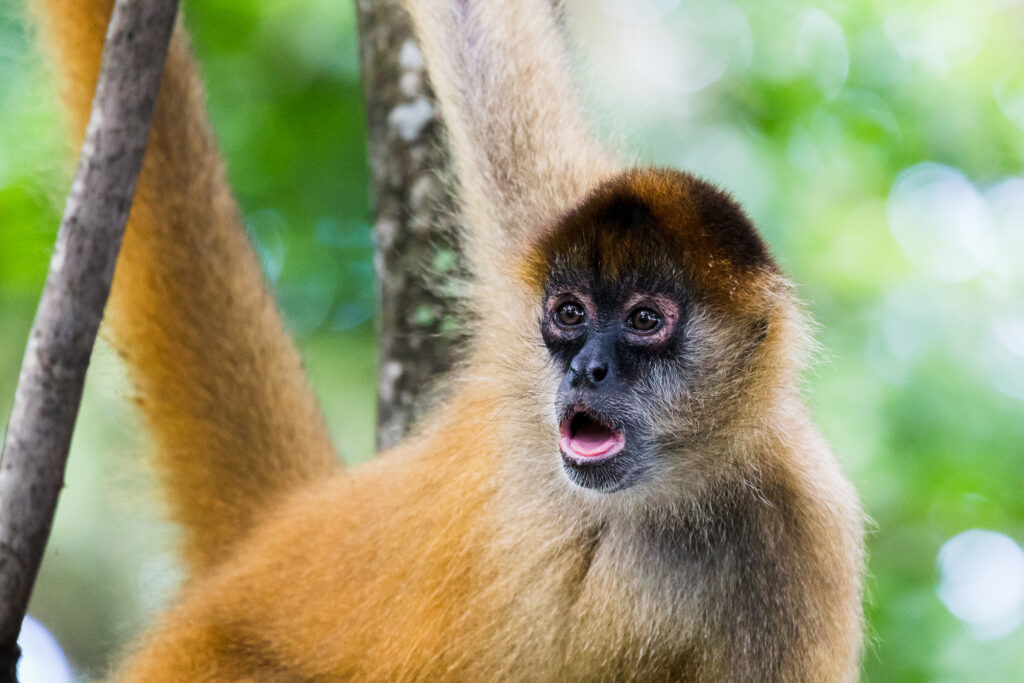
The brown
Spider monkey
competes with birds for attention at Manuel Antonio National Park. Beware, he is not so innocent and will steal from your belongings if left unattended!
©Jason Wells/Shutterstock.com
Nestled along the Pacific coast, Manuel Antonio National Park offers the perfect blend of beach relaxation and birdwatching.
With over 180 species, including parrots, hawks, and tanagers, bird lovers are in for a treat. The park’s lush forests meet pristine beaches, creating a unique habitat that attracts a diverse array of birds.
Consider making Si Como No your base for exploring this incredible park and its avian residents.
Tips: Combine beach relaxation with birdwatching. Go in the early morning. Watch your belongings (the racoons like to steal)!
6. Tortuguero National Park
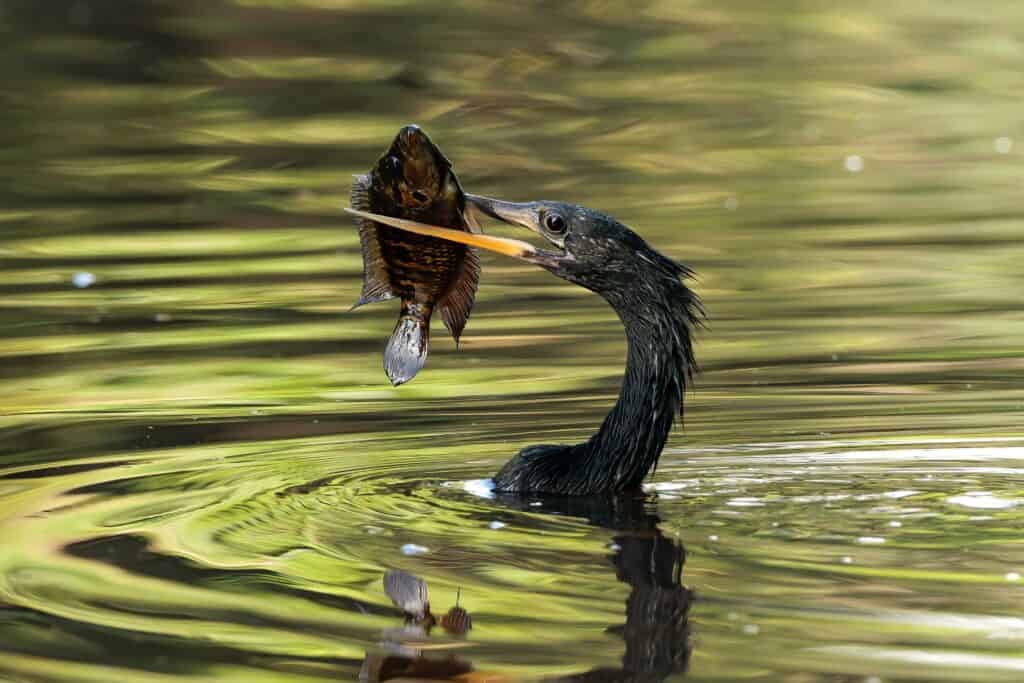
The Anhinga doesn’t have waterproof feathers. This allows them to fully submerge themselves underwater to hunt in the Tortuguero River!
©Jean-Baptiste Toussaint/Shutterstock.com
The Caribbean coast’s Tortuguero National Park is a birdwatching paradise with its maze of canals and lush rainforests.
During nesting season, exotic birds thrive in this environment. Boat tours provide the best way to explore the park and discover its avian inhabitants.
To enrich your experience, stay at the Laguna Lodge, offering a comfortable and eco-friendly setting amidst the beauty of Tortuguero.
Tips: The only way into Tortuguero is by boat (there are no cars!). Hire a local guide for early morning trips into the canals.
7. Santa Rosa National Park
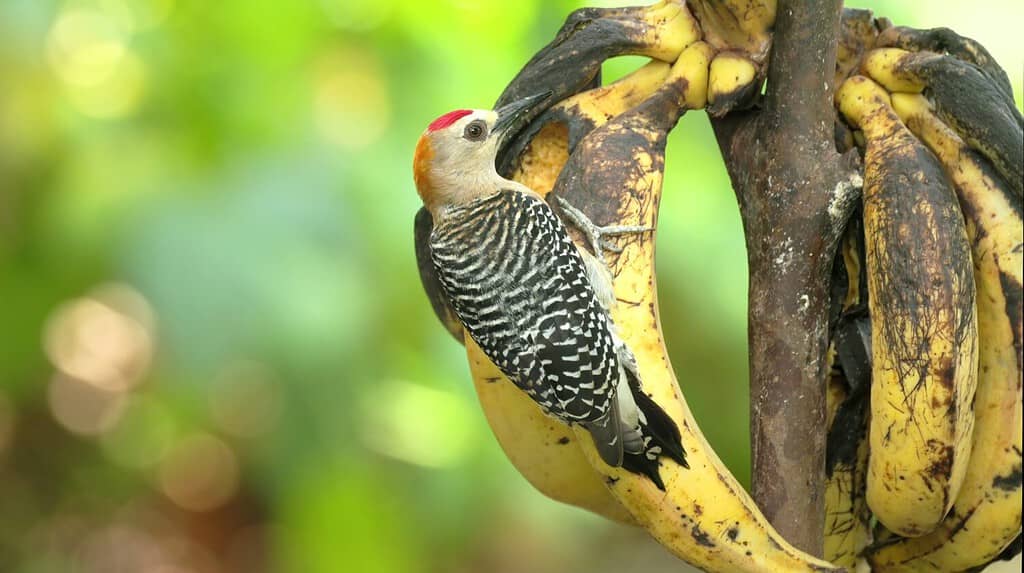
A Hoffman’s
Woodpecker
is feasting on bananas in Santa Rosa National Park.
©crbellette/Shutterstock.com
Santa Rosa National Park, in the dry forests of the North Pacific region, offers a unique opportunity to observe a diverse range of avian species.
The park’s transition zone between dry and rainforest habitats creates an ideal setting for spotting various birds.
Early morning walks are recommended, and you can enhance your adventure by staying at Hacienda La Casona, which offers a blend of comfort and natural beauty.
8. Carara National Park
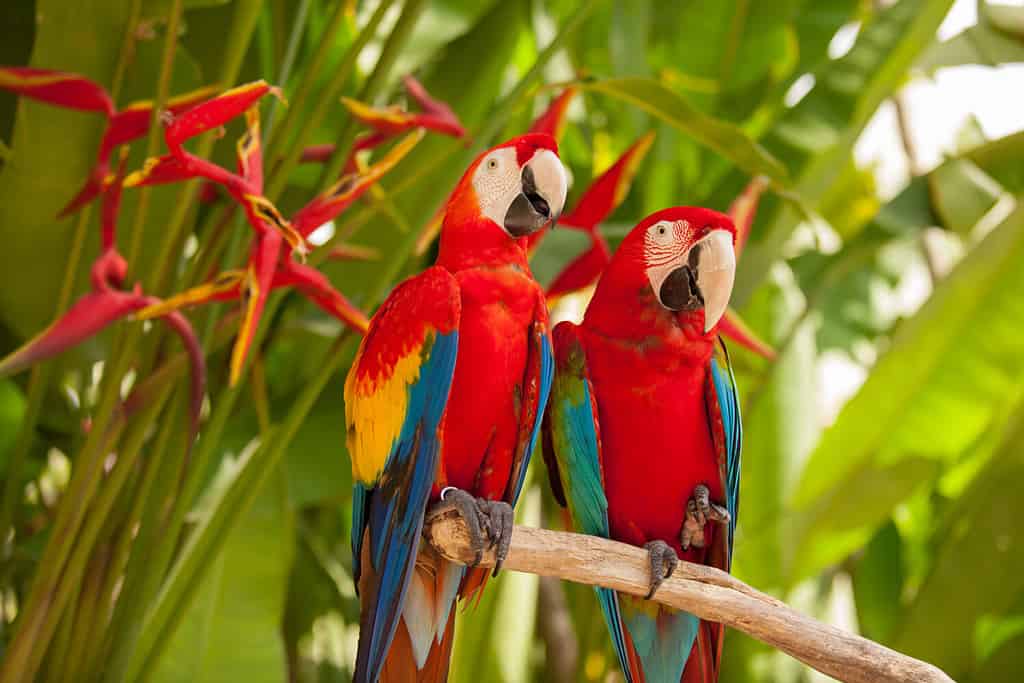
The Scarlet Macaw thrives in this region. Stop to listen for their distinctive vocalizations.
©Katia Titova/Shutterstock.com
Nestled in the transition zone between dry and rainforest ecosystems, Carara National Park is a treasure trove of avian diversity.
Scarlet macaws, trogons, and many more colorful species can be spotted here.
For accommodation, Villa Lapas offers a comfortable stay with access to the park’s avian wonders.
Tip: Hiring a guide is highly advisable to help you identify and learn more about these birds.
9. San Gerardo de Dota
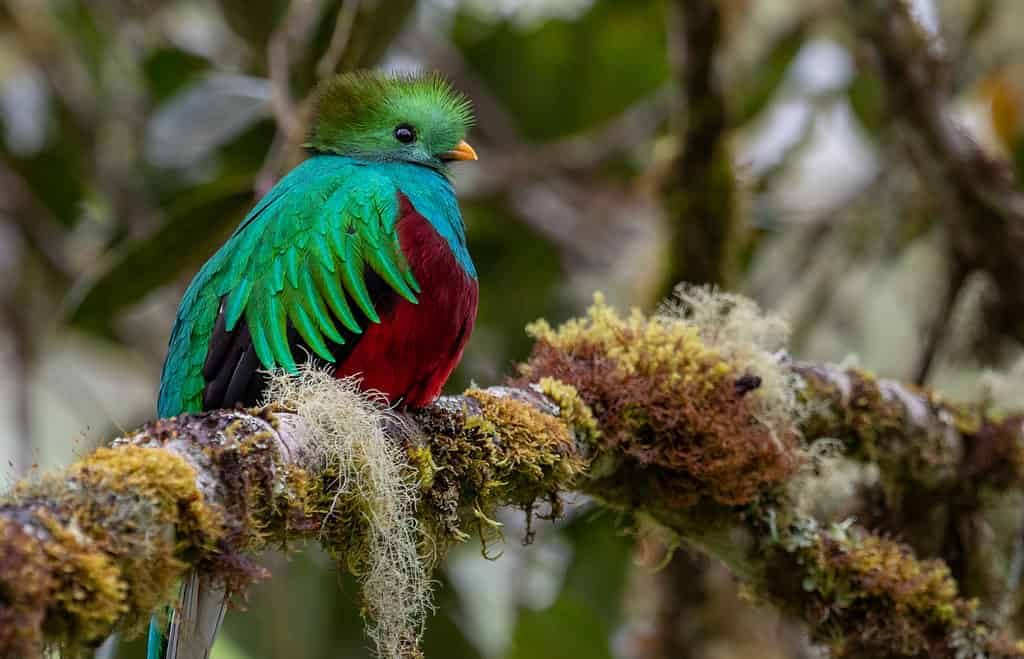
The elusive, beautiful resplendent quetzal enjoys the peaceful forest of the Savegre valley.
©iStock.com/Harry Collins
San Gerardo de Dota, located in the Savegre River Valley, is known for being the ultimate resplendent quetzal hotspot. This cloud forested region provides the perfect habitat for these stunning birds.
The best time to visit is during the mating season (generally March – June) when the quetzals are most active.
To immerse yourself in this incredible environment, stay at the Savegre Hotel, a cozy lodge dedicated to preserving the natural beauty of the area.
10. Cerro de la Muerte

One of the bigger
hummingbird
species, the green hermit (
Phaethornis guy), has a body length of roughly 5.3 inches.
©Jiri Hrebicek/Shutterstock.com
The highland region of Cerro de la Muerte is a misty landscape with unique and enchanting avian species. This area is perfect for birdwatchers interested in highland birds and hummingbirds.
As the weather can be unpredictable, it’s important to layer up and carry rain gear.
For an enriching stay, consider Dantica Lodge, which provides a comfortable base to explore the highland wonders.
Tidbits About Birdwatching in Costa Rica
What makes the birds and birdwatching so special in Costa Rica?
Rich Biodiversity:
Costa Rica boasts over 900 avian species, a birder’s utopia.
Year-Round Birding:
Birdwatching here is fantastic 365 days a year.
Migratory Hotspot:
Costa Rica welcomes countless migratory birds during North America’s winter.
Resplendent Quetzal:
Costa Rica is one of the best places to spot this mesmerizing bird.
Toucan’s Territory:
Keel-billed toucans rule the rainforests with their vibrant bills.
Scarlet Macaws:
The brilliantly hued macaws are a vivid sight in the wild.
Unbelievable Parrots:
Costa Rica is home to six parrot species, each with its charm.
Tropical Diversity:
Habitats range from beaches to cloud forests, creating varied ecosystems.
Experienced Guides:
Expert guides enhance your birdwatching adventure.
Eco-Friendly Tourism:
Costa Rica’s dedication to conservation ensures birdwatching’s future.
Birdwatching Tips for Ensure Your Success
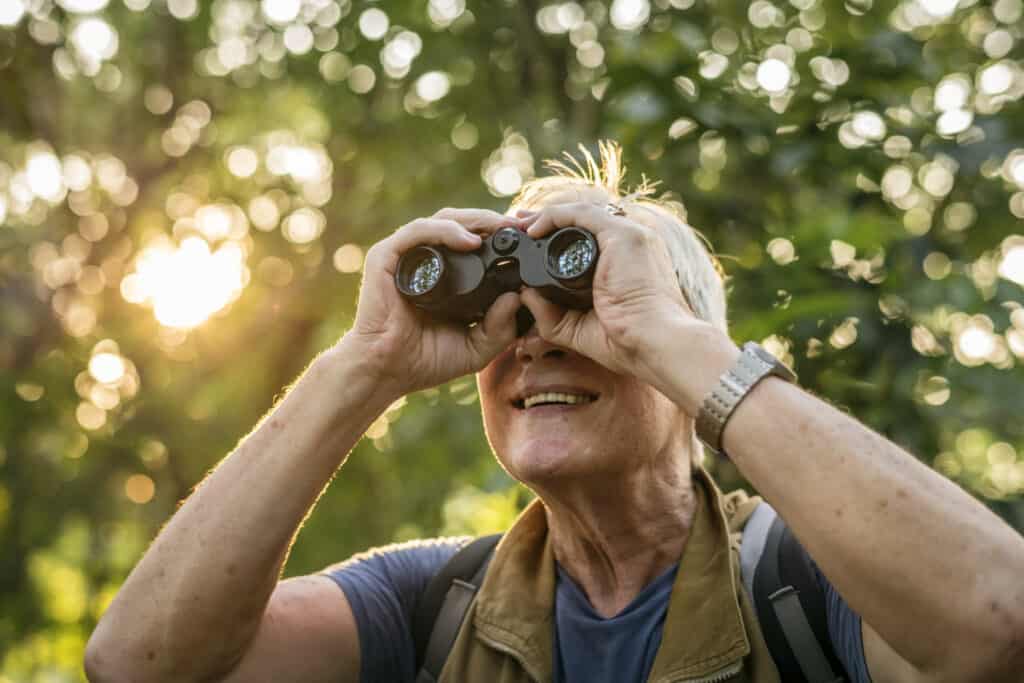
Elderly man is watching birds with binoculars.
©iStock.com/:Rawpixel
Here are 10 tips for birdwatching in Costa Rica:
- Research Birding Hotspots: Prior to your trip, identify the best birdwatching locations in Costa Rica, like Monteverde, Corcovado, and Tortuguero.
- Use a Field Guide: Bring a bird field guide or download a birding app to help you identify the species you encounter.
- Binoculars and a Spotting Scope: Invest in quality binoculars and consider a spotting scope for long-distance birding.
- Birding Tours and Guides: Consider hiring a local birding guide or joining guided tours for expert insights.
- Dress for the Environment: Wear neutral, lightweight, and comfortable clothing that blends with the surroundings. Don’t forget a hat and sunscreen.
- Patience and Silence: Practice patience and remain quiet while birdwatching. Birds are more likely to reveal themselves when you’re not making noise.
- Early Mornings and Late Afternoons: Birds are most active during these times, so plan your birdwatching excursions accordingly.
- Learn Bird Calls: Familiarize yourself with the calls and songs of common Costa Rican birds. It can aid in locating them.
- Respect Wildlife and Habitat: Observe birds from a distance and avoid disturbing them. Stay on designated trails to protect their habitat.
- Carry Essential Gear: Pack essentials like water, snacks, insect repellent, and a notebook for recording bird sightings.
Photography Tips for Capturing the Perfect Bird Photo
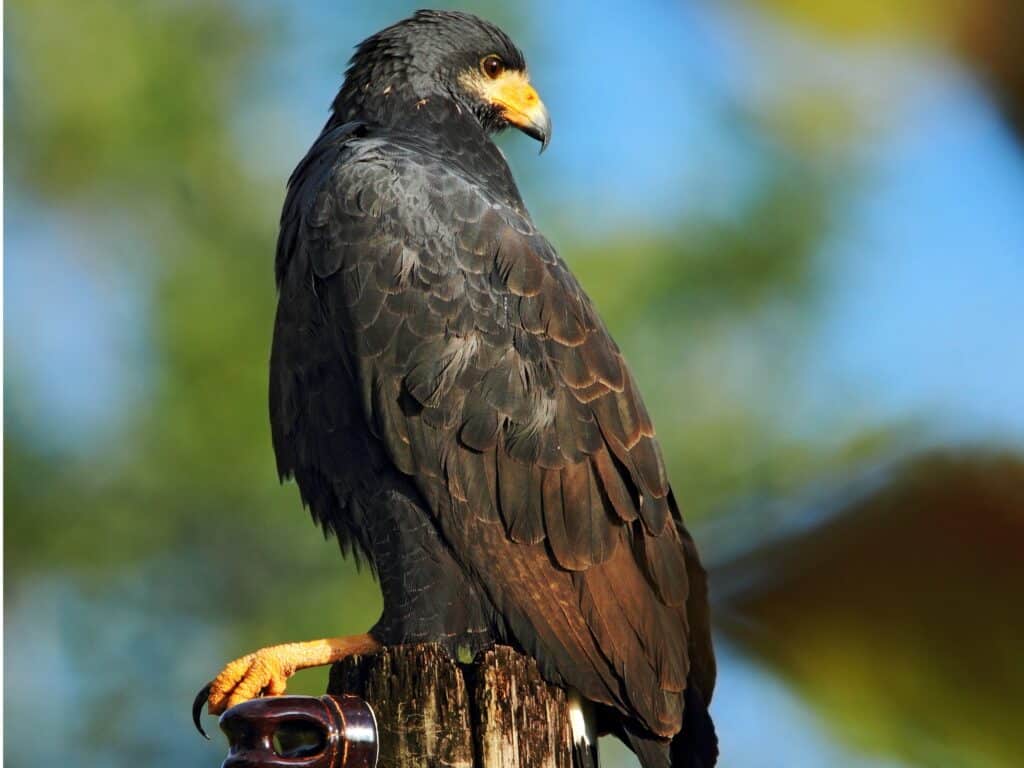
Capturing the perfect bird picture takes patience. This Zone-tailed Hawk (
Buteo albonotatua) is one of Costa Rica’s birds of prey.
©iStock.com/Ondrej Prosicky
Photographers, we have you covered too. Here are 10 tips for photographing birds in the wild:
- Know Your Equipment: Familiarize yourself with your camera, lenses, and settings before you head into the field. Practice adjusting settings quickly.
- Use the Right Gear: Invest in a telephoto lens (300mm or longer) to capture birds from a distance without disturbing them.
- Research and Scout: Learn about the behavior and habitats of the birds you want to photograph. Scout locations and times when they are most active.
- Patience is Key: Bird photography often requires long hours of waiting. Be patient, and don’t rush the process.
- Camouflage and Quietness: Wear earth-toned, non-reflective clothing to blend into the environment. Move quietly to avoid scaring the birds.
- Understand Light: Pay attention to the direction and quality of light. Early mornings and late afternoons provide soft, warm light ideal for bird photography.
- Use a Tripod or Monopod: Stabilize your camera with a tripod or monopod to reduce camera shake and ensure sharp images.
- Shoot in Burst Mode: Birds move quickly, so shoot in burst mode to capture a series of shots and increase your chances of getting the perfect frame.
- Focus on the Eye: Ensure the bird’s-eye is in focus. The eyes are the most critical part of a bird portrait.
- Respect Wildlife and Environment: Never disturb or stress the birds for the sake of a photograph. Keep a safe distance and avoid altering their natural behavior.
So, grab your binoculars, pack your bags, and get ready to be enthralled by the captivating avian wonders of Costa Rica. It’s time to embark on your birdwatching adventure of a lifetime in this tropical paradise.
The photo featured at the top of this post is © iStock.com/Carole Palmer
Thank you for reading! Have some feedback for us? Contact the AZ Animals editorial team.






